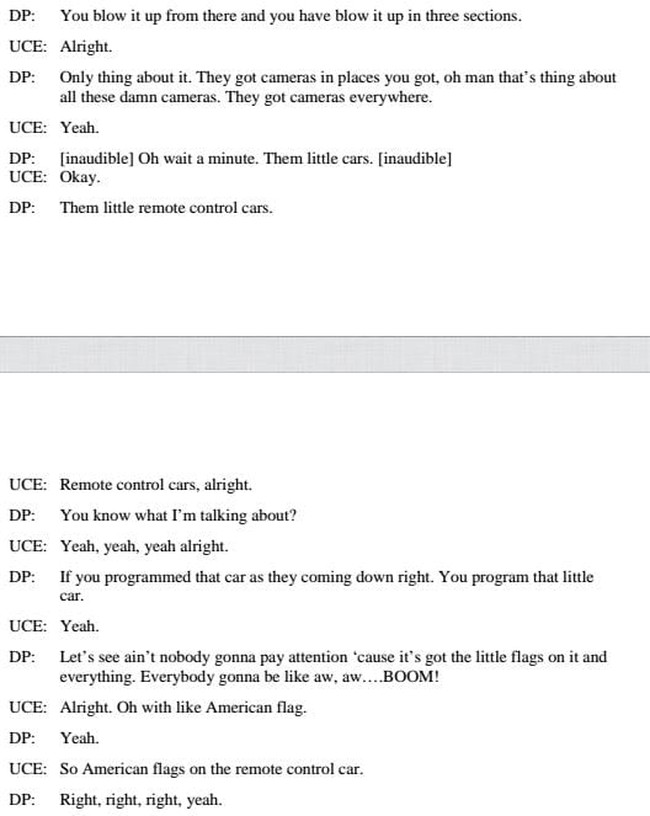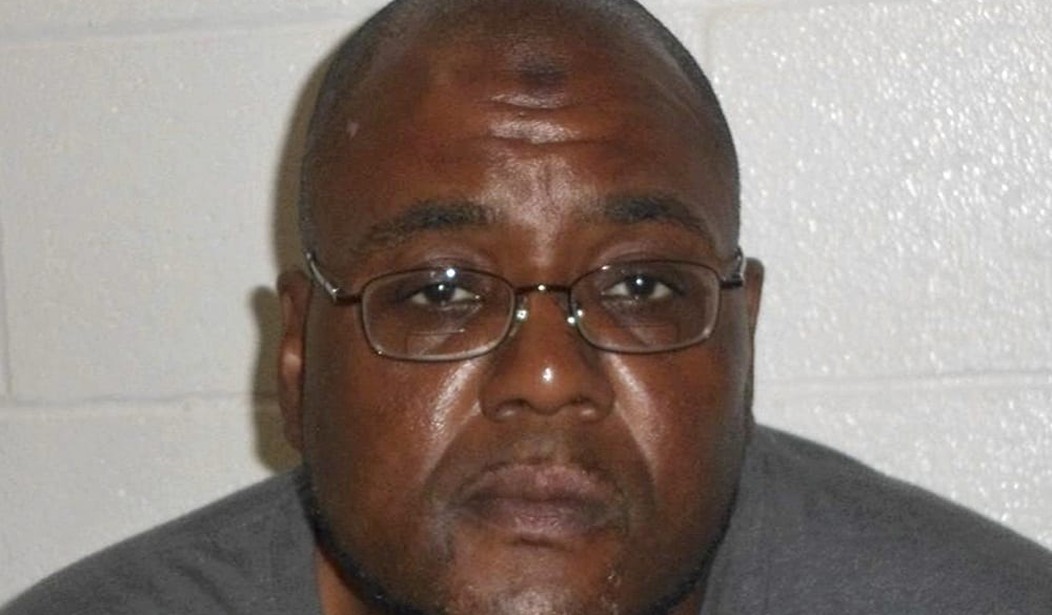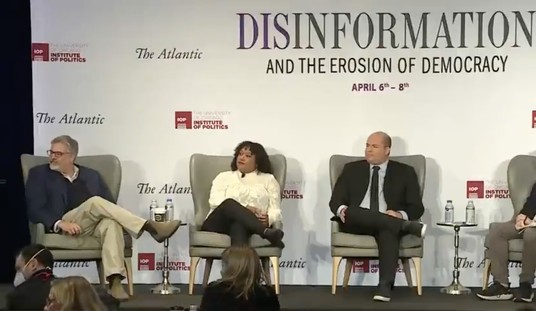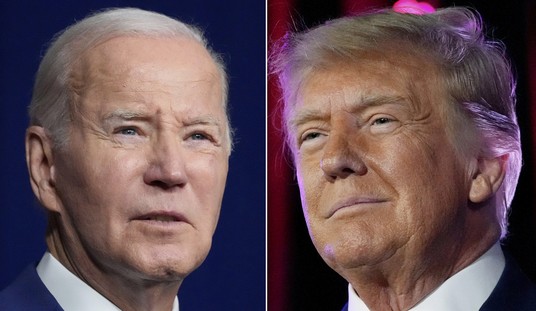Earlier today the FBI announced the arrest of 48-year-old Demetrius N. Pitts in connection with a plot to set off a bomb of some sort in Cleveland on July 4. My colleague, Kira Davis, has covered the arrest in this story. I have a bit of a different perspective. There is no doubt that Pitts was, at least in his seemingly Walter-Mitty-esque existence, someone who wanted to join al-Qaeda and kill Americans. How he got from the point of talking smack to the point of doing something is an interesting story. Let’s look at the timeline from the charging document. (Note, the blockquote sections come from this article. But I have replaced the generic use of “undercover FBI agent” with the actual terms from the charging document because there were no actual FBI agents in contact with Pitts up until the cuffs were snapped oh him.)
December, 2015 — Abdur Raheem Rafeeq, later determined to be Pitts, sends a private message on Facebook to a California-based political commentary show. According to the affidavit, the message says the USA will be destroyed, along with the phrase “Allahu Akbar.”
January, 2017 — Pitts uses the Facebook account to comment on pictures believed to be from a jihad training camp. He says Muslims need to train for combat, the affidavit says.
February, 2017 — The FBI reviews Pitts’ Facebook account and reports finding threats of violence against the United States.
July, 2017 — Pitts expresses a desire to recruit people to kill Americans who are anti-Muslim, the affidavit says.
Two facts stand out here. One: this kind of thing can be found on Twitter and Facebook at any time of the day and none of it is illegal. If threats of violence against the United States or white people were a crime, then Jeremiah Wright and Louis Farrakhan would be cellmates doing life.
September, 2017 and continuing through April 2018 — FBI agents in Cincinnati report determining that Pitts is willing to conduct an attack in the United States and willing to join a foreign terrorist organization.
This is interesting. before and after this we have a tight chronology, but eight months disappear here under the heading of “sh** happened.”
February, 2018 –Investigators report learning that Pitts expressed an interest in joining al-Qaida, training overseas, and returning to the United States to conduct an attack.
April, 2018 — Pitts expresses his desire to target members of the U.S. military who have killed Muslims overseas, the affidavit says.
Again, I don’t see what makes this particularly unusual. He’d fit right in at the next meeting of CAIR. But, he’s done something to make himself a target for the FBI. My guess is that he shot his mouth off on the internet in a way that led to him being personally identified without a lot of effort and it was decided to reel him in. So they directed an informant at him:
June 15, 2018 — An FBI Undercover Employee (UCE), that would be an informant, posing as a contact of al-Qaida meets with Pitts in Willoughby, OH, after Pitts expresses a desire to meet with an al-Qaida “brother.” The informant secretly records the conversation. According to the affidavit, Pitts describes possible targets to attack. Pitts dismisses the idea of targeting a sports venue or marathon and again talks about attacking military members.
This is the most inflammatory thing in the conversation. DP is Pitts, UCE is the informant:

June 22, 2018 — The informant meets with Pitts in Walton Hills, OH, where the affidavit says they discuss launching an attack in Cleveland for al-Qaida during the Fourth of July holiday. Pitts talks about targeting downtown festivities and using a remote control car to set off a bomb. This is the plot:

Pitts and the undercover agent review online maps of downtown Cleveland, where Pitts determines an explosive device will have the most “impact,” the affidavit says. In talking about possible targets, Pitts is pleased to learn that fireworks are set off from Voinovich Park, which is near the U.S. Coast Guard station, the U.S. Army Corps of Engineers and the Anthony J. Celebrezze Federal Building. Pitts says he will travel downtown to take photos and record video of the locations, and asks for a bus pass and cellphone to do so.

Pitts hits up the informant for a bus pass and a burner cell phone with camera capability. Criminal mastermind.
June 24, 2018 — Pitts texts the agent, saying that he wants to be known by the name “Salahadeen Osama Waleed.”
June 25, 2018 — Pitts meets in Maple Heights with a Confidential Human Source (CHS) posing as an al-Qaida contact, who gives him a bus pass and cellphone so he can travel to downtown Cleveland and conduct surveillance. The CHS is a long time informant, in this case probably targeting extremists in the Cleveland area. This is distinct from the UCE which was probably someone known to Pitts and who was convinced by the FBI to help him strategize his masterstroke.
June 26, 2018 — Pitts tells the informant that he conducted reconnaissance in downtown Cleveland and wants to “destroy the government,” the affidavit says. The FBI observes Pitts on East 9th Street as he records videos or takes photos on a phone. Pitts also tells the UCE that he intends to travel to his hometown of Philadelphia to conduct reconnaissance there, but encourages the agent to have a “brother” continue building an explosive device for Cleveland, the affidavit says.
June 27, 2018 — Pitts meets with an UCE in Maple Heights, OH, to turn over the phone he used to take photos in downtown Cleveland. The photos were then supposed to be turned over to “al-Qaida brothers.” Pitts meets with the UCE later that day for more than two hours, during which they drive to downtown Cleveland and discuss the “impending July 4th bombing,” the affidavit says. Pitts talks about using a full-size van to execute the bombing and says he will return downtown to conduct more reconnaissance. That evening, Pitts texts the UCE and says “Cancel the party for now.” He says no vehicles are being allowed close to the site and that police dogs will be in the area for the holiday. Pitts says he wants to go to Philadelphia and seems to reference explosions in text messages with the CHS, the affidavit says.
June 28, 2018 — FBI agents search the phone that Pitts returned. It includes two “bayah” (pledge of allegiance) videos in which Pitts discusses killing, the affidavit says. The UCE tells Pitts that “the brothers” want him to search for a vehicle on which they could place a bomb. Pitts agrees to search for several vehicles and report back with images and prices.
June 30, 2018 — The UCE calls Pitts and tells him that the Cleveland operation is a “go.” Pitts acknowledges that it is an attack on behalf of al-Qaida. The agent tells him there will be a large explosion in front of the U.S. Coast Guard Station on July 4. Pitts discusses the possibility of traveling to San Francisco to conduct additional reconnaissance there.
July 1, 2018 — Pitts and the UCE meet in Garfield Heights so Pitts can discuss his Philadelphia plans. The UCE then shows Pitts a toy car containing explosives and BBs. Pitts suggests they detonate the remote-control car under a police or FBI vehicle as a distraction, the affidavit says, then detonate a larger bomb in Cleveland. He also suggests giving the cars to the children of military personnel, so that they unwittingly detonate the devices. FBI agents arrest Pitts later in the day.
A few words about Demetrius Pitts, arrested by the feds for plotting to help a bombing on the Fourth of July. You can read the affidavit in support of the complaint against him here: /1https://t.co/6UXj1b2VHS
— ProfanityLadenTweetsHat (@Popehat) July 2, 2018
/2 There's a pattern of the FBI winding up big-mouthed losers and taking them by the hand down the trail into conspiracy. It's often questionable what, if anything, the person could or would have done without the FBI's involvement.
— ProfanityLadenTweetsHat (@Popehat) July 2, 2018
As a 2014 report by Human Rights Watch and Columbia University Law School’s Human Rights Institute noted, “Multiple studies have found that nearly 50 percent of the federal counterterrorism convictions since September 11, 2001, resulted from informant-based cases.” That doesn’t sound so bad until you realize the informants’ job in many of these instances was to trick otherwise innocent people into signing on to illegal plots of the government’s own invention. In one case, a judge concluded that the government “came up with the crime, provided the means, and removed all relevant obstacles” in order to make a “terrorist” out of a man “whose buffoonery is positively Shakespearean in scope.”
Trevor Aaronson, author of The Terror Factory: Inside the FBI’s Manufactured War on Terrorism, estimates that only about 1 percent of the 500 people charged with international terrorism offenses in the decade after 9/11 were bona fide threats. Thirty times as many were induced by the FBI to behave in ways that prompted their arrest. A 2011 report by the New York University School of Law Center for Human Rights and Global Justice examined several high-profile cases and found that “the government’s informants introduced and aggressively pushed ideas about violent jihad and, moreover, actually encouraged the defendants to believe it was their duty to take action against the United States.”
/3 In this case, Pitts needed the FBI to give him a bus pass and a phone with video capability in order to scope out potential bombing sites for them. pic.twitter.com/MTm10Vp5Ux
— ProfanityLadenTweetsHat (@Popehat) July 2, 2018
/4 Now, you might think this is entrapment. It's likely not, given how hard entrapment is to prove. The defendant has the burden to prove (1) the government induced the crime, and (2) he wasn't predisposed to the crime.
— ProfanityLadenTweetsHat (@Popehat) July 2, 2018
/5 The predisposition one is tough to prove in a case like this, because it's hard to convince a jury that a normal non-predisposed person would amble into a terrorist conspiracy if invited.
— ProfanityLadenTweetsHat (@Popehat) July 2, 2018
/6 But leave aside the are-we-setting-up-losers concern, for the moment. Let's talk focus and resource allocation.
Is this helping detect, locate, and stop people with the intent and ability to carry out terrorist attacks without the FBI's encouragement? Or is it diverting us?
— ProfanityLadenTweetsHat (@Popehat) July 2, 2018
/7 In other words, from a national security standpoint, I'm concerned this is security theater — spending lots of law enforcement resources to tell a story using an idiot, and then pretending that we're made the country safer. Have we? /end
— ProfanityLadenTweetsHat (@Popehat) July 2, 2018
Indeed, when you look at the manifest failure of the FBI on most of the major terror attacks of the past decade had come under FBI suspicion and the agency did nothing. The Fort Hood shooter was in email contact with a known terrorist and this was known to the FBI; the shooters at Pam Geller’s arts festival in Garland, TX, had been wound up by the FBI and an FBI agent was on the scene who did nothing. In fact, the Garland story has a lot of similarities to the Pitts story. And the Pulse nightclub shooter. And the shooters in Chattanooga.
The correct question here is not one of entrapment because he obviously had the desire to participate in a plot to carry out a terror attack. The question is whether the resources expended here were worth it and the degree to which Pitts was simply an isolated and angry man living a fantasy life of car bombs and beheadings until he was set in motion towards a very long prison sentence by the FBI.
A cynic might even think that, as the FBI has a bit stench attached to it these days, it might be useful to get some good publicity out there.
=========
=========
Like what you see? Then visit my story archive.
Follow @streiffredstate
I’m on Facebook. Drop by and join the fun there.
=========
=========














Join the conversation as a VIP Member